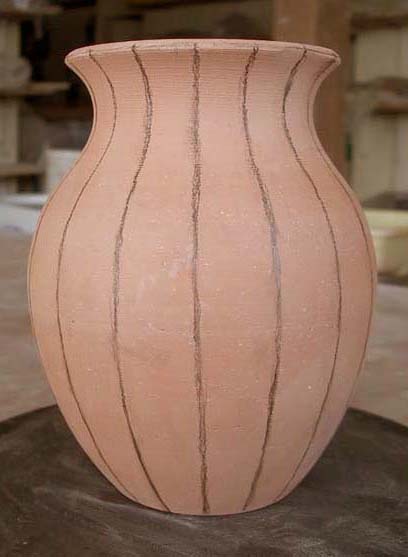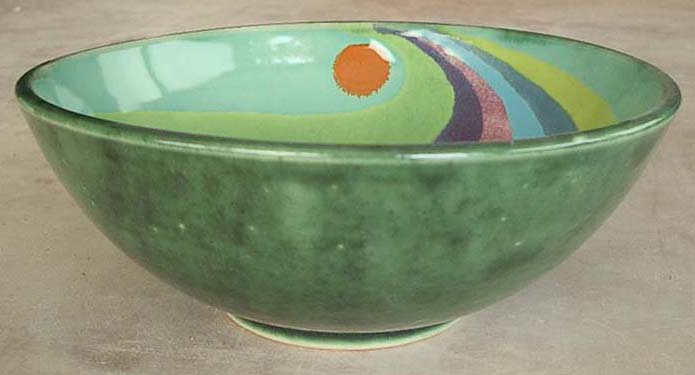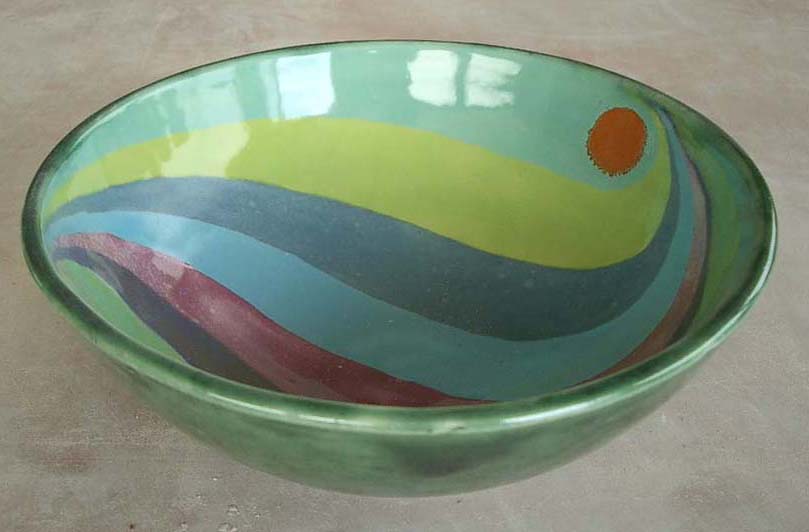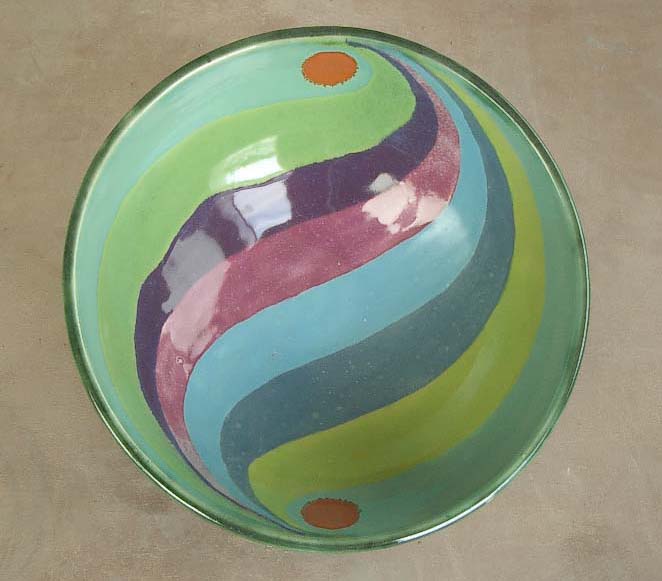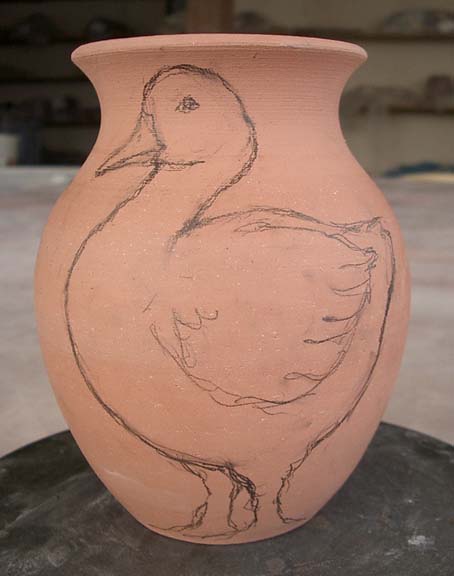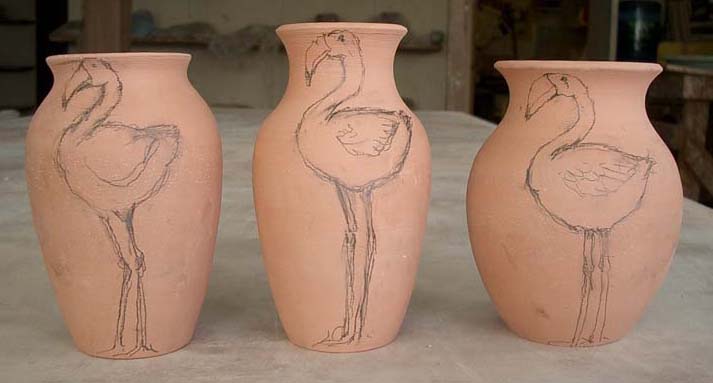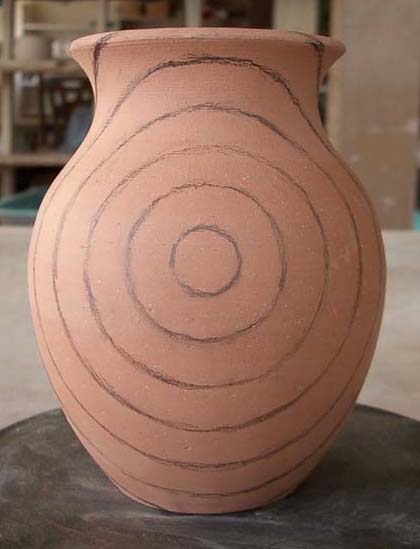
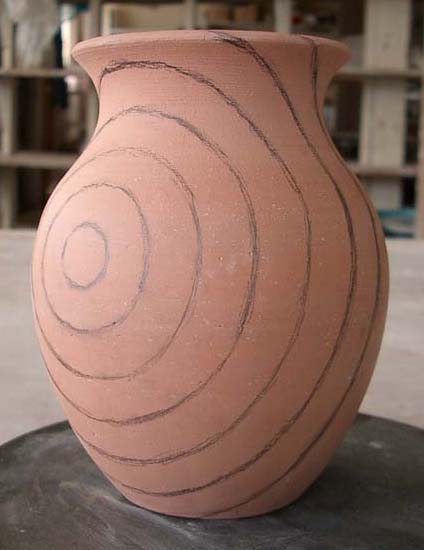
On this pot, a circle has been drawn on the shoulder with additional circles around it. Head on, it looks as if the circle pattern has been distorted in the neck area, that the distance between the lines has changed. When the pot is turned, you can clearly see it hasn't. The illusion is caused by the curve moving inwards, squishing the circles and forcing them up. Looking at the pot head-on with the circle in the center, the pot looks round and full. Looking at the pot with the circles off-center, the more vertical lines makes the pot look thinner.
|
